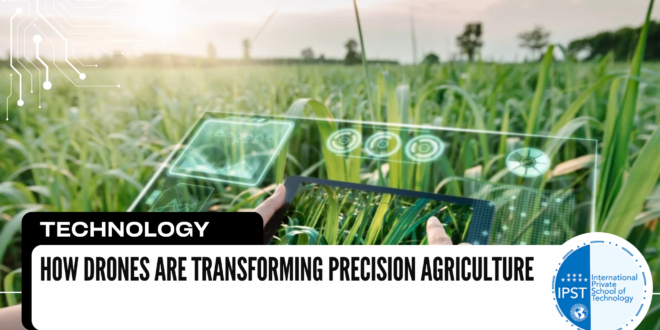The Impact of Drones on Precision Agriculture
Drones are revolutionizing modern farming by providing real-time data, optimizing resource use, and improving overall efficiency. Equipped with advanced sensors and imaging technology, drones offer valuable insights for precision agriculture, enabling farmers to make better-informed decisions.
Key Applications of Drones in Agriculture
1. Crop Monitoring and Health Assessment
Drones equipped with multispectral and thermal cameras can assess crop health, detect stress, and identify diseases early. This allows farmers to take immediate action, reducing crop loss and improving overall yield.
2. Precision Spraying and Fertilization
Drones can deliver precise amounts of fertilizers, herbicides, and pesticides, ensuring minimal waste and environmental impact. Benefits include:
- Cost reduction by limiting chemical usage
- Better coverage of difficult-to-reach areas
- Safer operations by reducing human exposure to chemicals
3. Soil and Field Analysis
Before planting, drones can conduct 3D mapping and soil analysis, helping farmers optimize irrigation systems, planting patterns, and fertilization. This results in better soil health and increased productivity.
4. Livestock Monitoring
Drones also assist with livestock management, using thermal cameras to monitor animal health, track movements, and locate missing livestock, ultimately enhancing herd management.
Benefits of Using Drones in Farming
- Efficiency – Drones allow farmers to cover large areas quickly, saving time and reducing manual labor.
- Cost Savings – By optimizing resource use, drones reduce operational costs related to water, chemicals, and labor.
- Environmental Benefits – Precision applications reduce waste, conserving resources and minimizing environmental damage.
- Improved Decision-Making – Drones provide real-time, actionable data, enabling farmers to make more informed decisions.
Challenges and Future of Drone Technology in Agriculture
While drones offer significant advantages, challenges remain, such as high initial costs, technical expertise requirements, and regulatory obstacles. However, AI advancements and automated systems are making drones more accessible to farmers, and their role in agriculture will continue to grow.
In the future, drones will be essential to sustainable farming practices, improving productivity, resource management, and environmental stewardship.
 International Private School of Technology المدرسة الدولية الخاصة للتكنولوجيا Private School مدرسة خاصة للتكوين المهني
International Private School of Technology المدرسة الدولية الخاصة للتكنولوجيا Private School مدرسة خاصة للتكوين المهني


